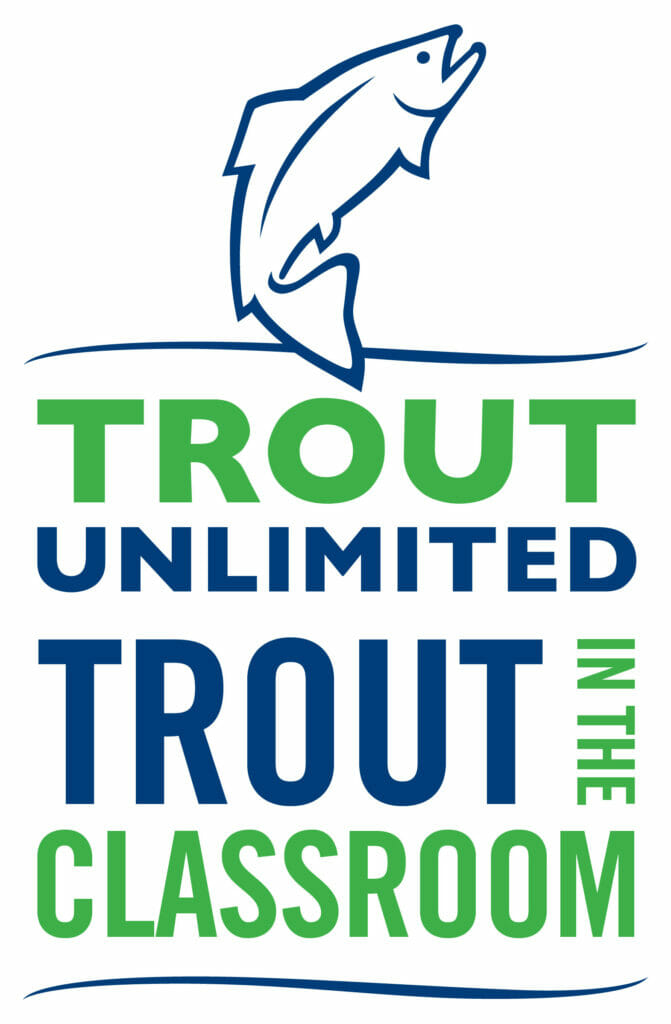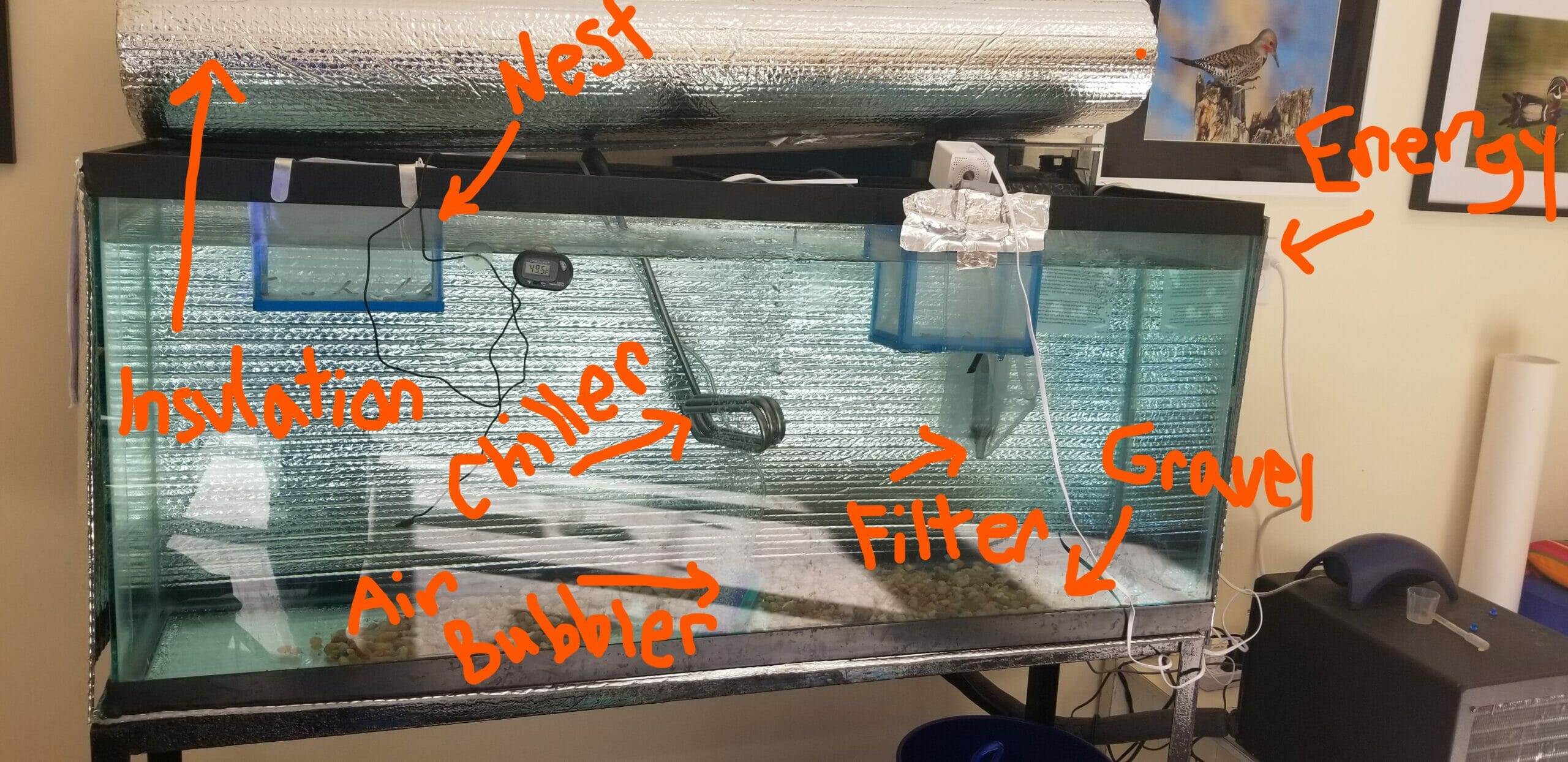
The NYC and Watersheds Trout in the Classroom virtual trout tank fish have lost their yolk sacs and we can officially call them fry. They are not exactly ready for food, but they are certainly more curious and adventurous on this rainy day.
I’m not sure if the tank trout can hear or see the rain outside of the museum windows, but we know that rainy days are important to the wild trout. Rain-dependent streams, such as ephemeral and intermittent streams, flow only after precipitation. These streams flow into one another and eventually into the perennial (year-round) rivers. The runoff brings nutrients into the rivers as well as fallen branches and rocks that can shape trout habitat. Additionally, streams swell, get aerated and cool down.
Observing what trout need in their natural ecosystems is how we know what they need in their tank environment. Each component in our TIC trout tank can correspond to a natural feature of a healthy stream. We know that trout need a chiller, filter, air bubbler, nest basket, and eventually some trout food. Additionally, our trout in the classrooms need hours of care (cleaning and maintenance), energy and expensive equipment.
Nature can provide all of this and more and does it so much more efficiently. And it’s not just trout, almost all aspects of our human well-being can be attributed to nature and the ecosystem services that it provides. So, while it’s great to get a view into the natural world through our trout tanks, we know there is noting better for trout (and for us) than a natural healthy stream.
Science Journal Question for TIC Students: What does a tank filter do and why do we need it for our trout? What filters the water in the stream ecosystem? What are the other parts of a trout tank that resemble parts of a stream?
Dive Even Deeper: What are three important ecosystem services that are crucial for humans? What are some threats to ecosystem services and how can we prevent them?



